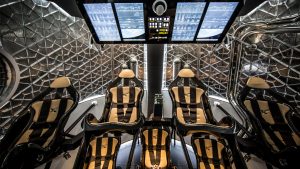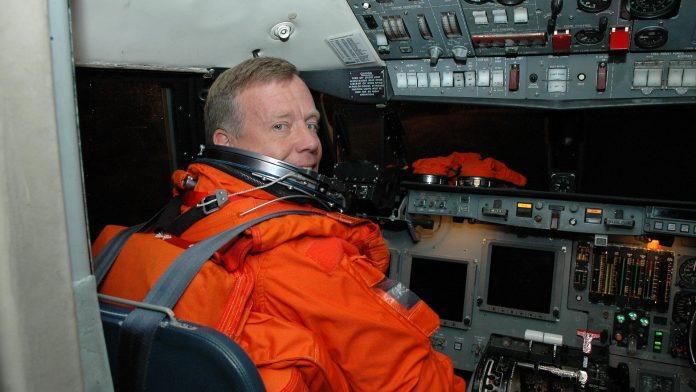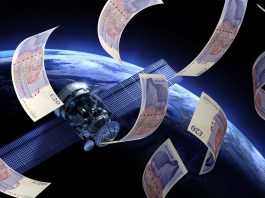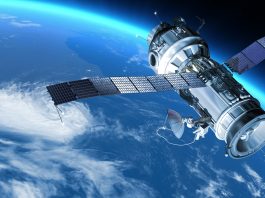Marina Ruggieri, IEEE Fellow and Professor of Telecommunications Engineering at the University of Roma ‘Tor Vergata’, discusses the transformative nature of the increasing use of software in space missions.
The sophistication of software onboard space shuttles has increased exponentially in recent years. Spacecrafts are now being equipped with touch screens running software that is designed to safely navigate the entire space mission autonomously. Despite software making it easier to travel to space, spacecraft have been experiencing software issues that could have resulted in a catastrophic failure. With this in mind, many experts are questioning whether software has made space travel too autonomous. However, software in space has been around for some time, and the benefits far outweigh the risks.
The application of software in space
Software in space missions has been a key-asset since the very beginning of space exploration. Indeed, software has been the silent companion and supporter of the complex hardware structures that must face the unfriendly space environment to survive, and to effectively accomplish the mission for which they have been conceived, designed, and developed. Now, the time has come for software to take a more prominent role – to become the leading actor of all robotised and human activities in space. And there is more than one reason to do so.
Software has the power to make any hardware more flexible, resistant to unpredictable circumstances, as well as compliant with the right for human and robot travellers in space to be connected and to be data-aided. In addition to this, software can also help to make space activities more sustainable for both Earth and space. In recent years, it has become clear that the future is – and must be – software-driven, and that includes all activities, missions, systems, and equipment that are going to be deployed for and within the space domain.
Software can become increasingly pervasive in space at various levels: network, node (such as satellite, space station, lander), and user (such as robot or astronaut). An intensive use of a software-driven network results in improved flexibility, reduced hardware and related costs, as well as applications and services that can adapt to the specific context and needs. The resulting infrastructure is also able to better manage a sustainable space and provide a lower impact on Earth sustainability. Software-driven nodes (satellites, the space station, orbiters, and landers) improve their flexibility, security, and sustainability. Indeed, they can adapt their mission according to planned and sudden circumstances.
In addition, the adoption of software in space missions has become extremely effective at user level. In space, a user can be either a robot, a human being, or – even better – a co-ordinated node, composed of a human being and an Artificial Intelligence (AI)-based robot. This ‘super-node’ is able to best cope with other software nodes within a software-defined network, with the most benefit for the ‘co-ordinated’ user, in terms of security, mission effectiveness and, last but not least, comfort in the space experience.
The predictable and unpredictable needs of space explorers
In space travel, there is a set of known, predictable circumstances, in addition to critical aspects that already represent a challenge in the proper design and development of a mission. What makes the procedures, equipment, natural exposure of hardware to failures, or (graceful or not) deterioration in a space exploration mission more critical is distance. This is not simply referring to the physical distance from anyone or anything that can help solve an issue, but the most frustrating aspect of distance: delay in bidirectional communications and data exchange.
An ‘intelligent’ space network, or, in other words, a ‘more-than-smart’ network, that is able to learn and improve its performance by adapting to the context, is the best infrastructure to be surrounded by during a space travel. Due to its high level of function virtualisation at service and control levels, the network is able to cope with the predictable, and, more importantly, the unpredictable circumstances of space travel. It does so by adapting and even sometimes anticipating user needs. The inputs for changes can either be driven by data collected through sensors, located in both the far and the near, as well as even the body-related surroundings of the user, or by commands that are either explicitly or implicitly given by the user.
An important asset for the proper use of the sensor-collected data is a fast and reliable data (pre- or full) processing that can transform the data into a knowledge-based set of action and/or countermeasures. A super-node of the human user with an artificial intelligence (AI)-based robot would be the ideal configuration to deal in the most effective way – through an intelligent network – with both predictable and unpredictable circumstances.

© SpaceX
The benefit of data availability for space explorers
There are two assets that can make the difference in the provision of useful information and data and, through them, impact the knowledge-based management for the explorer’s space travel: a space-based cloud – or, in other words, a ‘cloud-over-the-cloud’ – and an Internet-of-space-Things (IoST) system. In particular, by maintaining the approach and principle of a terrestrial-based cloud, a significant portion of the supporting infrastructure is thus located in the space domain.
According to the specific space exploration needs – distance, duration, and places – the space-based cloud portion can help the explorer to have reliable data availability to support decisions, to set countermeasures, and to enjoy the travel. The space-based cloud would be the most suitable structure to support the interplanetary internet usability and effectiveness. The asset can also help the space traveller to overcome the solitude that the communications distance caused by the physical distance imposes.
The Internet of Space Things approach is an additional aid to gather data that can be available after a local pre- or full processing phase. In principle, any object in space, or landed on planets, can contribute to the Internet of Space Things, as occurs on Earth with the Internet of Things (IoT). The potential of that approach to support the space explorer is interesting. The above-mentioned super-node can help here, not least because the robot companion is in itself a data storage and data source asset to the human user.
Space exploration would thus become much more than just a knowledge experience for the human user and – through her/him – for humanity. It will be a natural exercise for human beings and robots to co-operate in an unfriendly environment and in potentially critical circumstances for the most effective solutions of issues, as well as the most enjoyable experience of the physical and – most importantly – the associated psychological travel.
Software in space is the past, present, and future
Ultimately, the softwarisation of the space network is nothing new. Software has been used for many years in the space domain. However, it is now taking a more prominent – or leading – role, rather than sitting behind hardware to make it function as expected. As well as making hardware more robust, flexible, and cost effective, software is also transforming space travel for explorers. While it has made travel more autonomous and the journey more comfortable, software is also helping space explorers to quickly respond to predictable and unpredictable situations – such as a critical hardware failure. It does all of this on top of collecting data and making it available to space explorers to make important decisions related to space exploration. With all of this considered, it is safe to say that the softwarisation of the space network has transformed space travel for the better – in the past, the present and in the future.
Marina Ruggieri
Fellow
Institute of Electrical and Electronics Engineers (IEEE)
Professor of Telecommunications Engineering
University of Roma ‘Tor Vergata’
+39 06 7259 7451
ruggieri@uniroma2.it
Tweet @unitorvergata
http://ieeeshutpages.s3-website-us-west-2.amazonaws.com/
https://en.uniroma2.it/academics/schools-and-departments/school-of-engineering/department-of-electronic-engineering/
Please note, this article will also appear in the third edition of our new quarterly publication.









